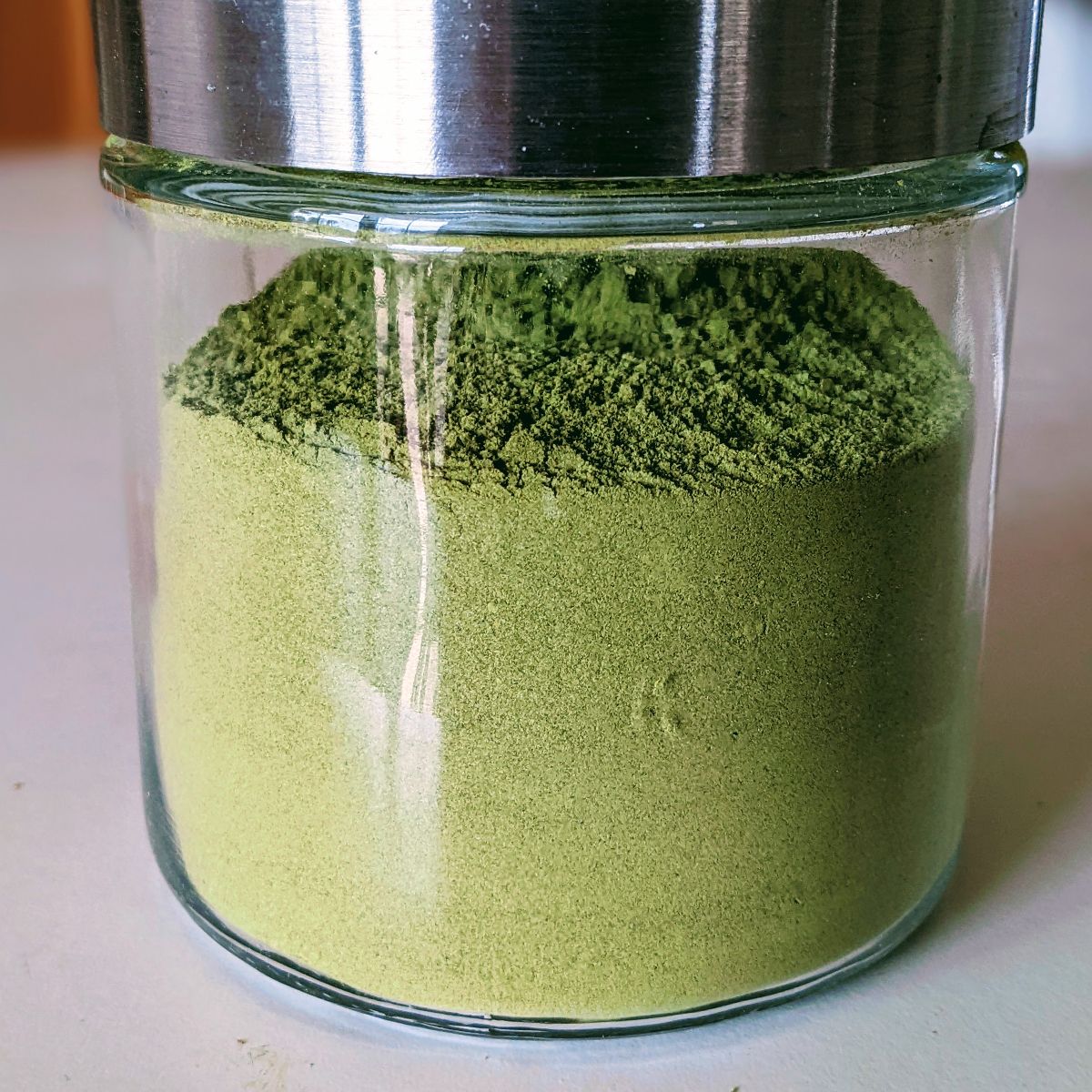Olives are such special trees. They live long, are full of meaning (religious and not), they have character and make any plot look wonderful. Some people like to let them wild, others prune reasonably, while others are turning them into bonsai projects.
In any case, the fruit is widely desired and longed for. You can’t just pick forage and eat it, of course. To add to its mystique, it needs to be cured – as in, fermented – before it can be savoured.
Unfortunately, I strongly dislike olives. So while I love having the trees around our plot, I was wondering if there were more functions they had that weren’t being utilized.
Our youngest boy found one: hanging and swinging in one of the strongest branches.
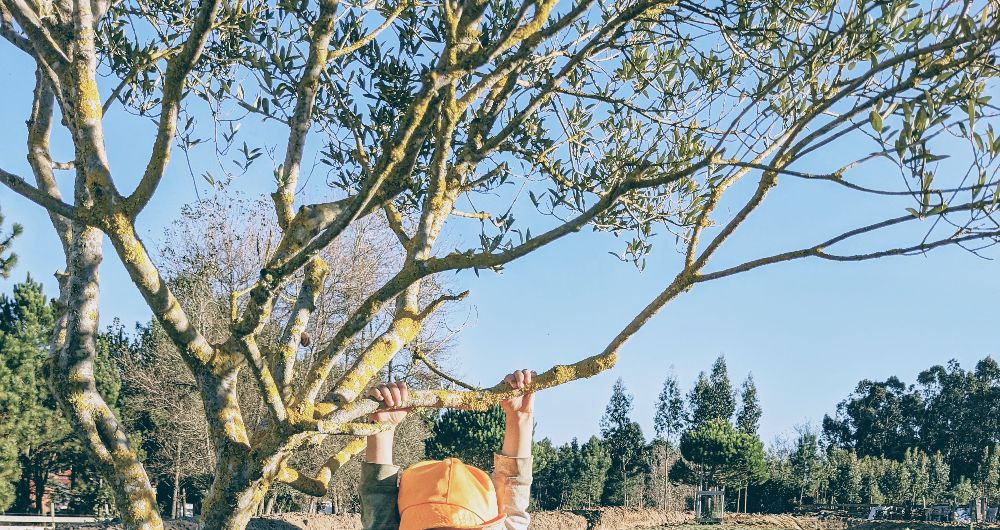
Sitting near an olive tree helps me meditate as I contemplate on the hundreds of years these trees might still have ahead of them. What will they see of my future generations that I won’t? What stories would they tell if they could travel in time?
But, as we all got sick with the virus in the news, a friend mentioned making tea with olive leaves. Hmmm. So, another endless poking around on the internet shed some light on the many benefits of these leaves: some of them scientifically proven, others proven by traditions, folklore and what not.
One thing was clear: those leaves had just gained a new meaning.
Once it was time to prune the trees lightly, the opportunity came up to have a stacked function activity:
- Collecting tree leaves with the kids: quality time, grounding/calming activity, appreciate the social circles that have been created and enhanced for countless generations doing the same thing we were doing
- Pruning: protect the tree, exercise, outdoor time (mood, health)
- Drying the leaves: improving skill, food preservation
- Making the extract: health, food preservation
- Discarding the pruned branches: enrich the compost pile
All in all, this was a great way to spend an afternoon. And we were left with this beautiful powder and some dried olive leaves.
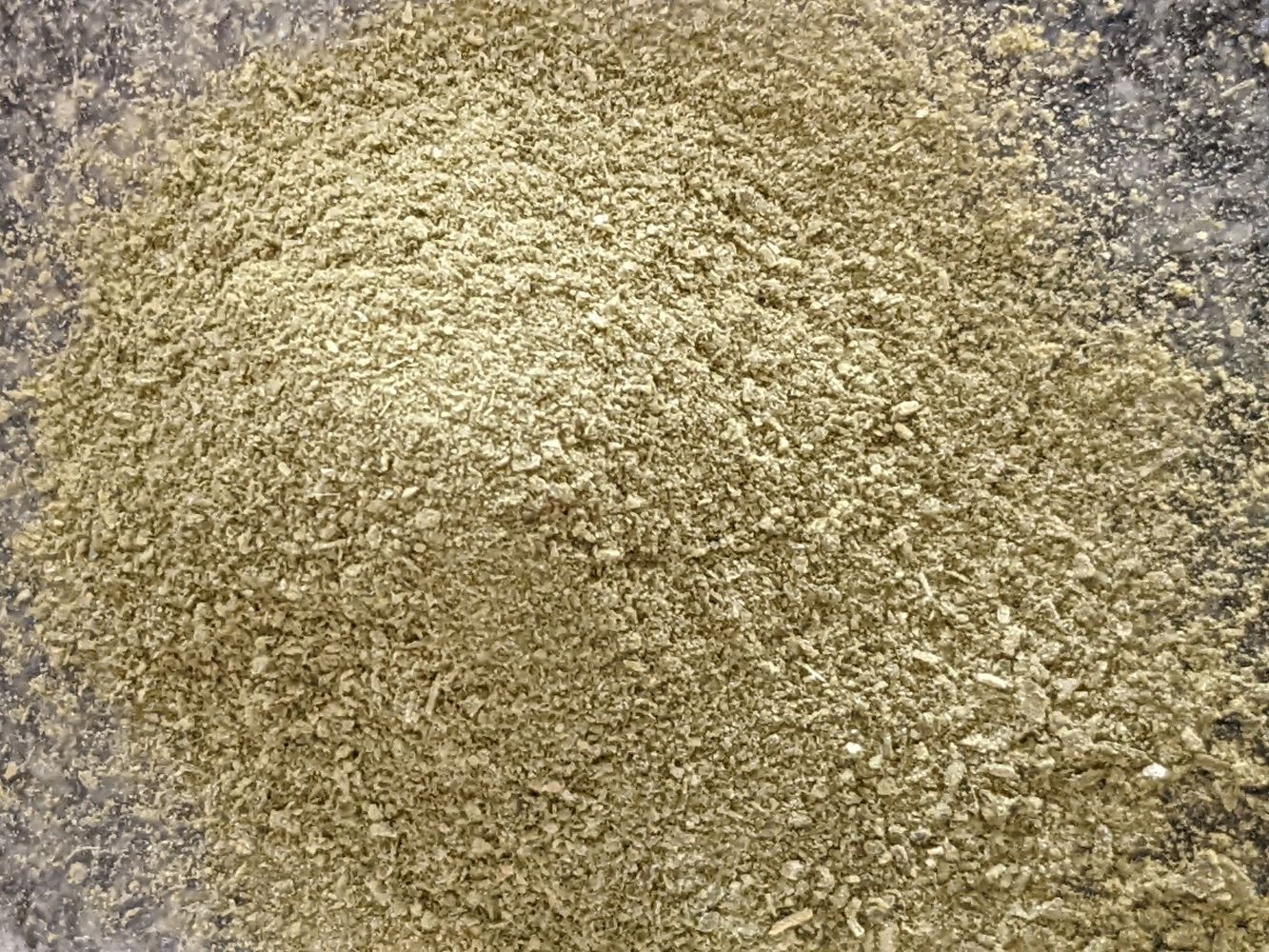
The leaves will be used mostly for making tea and the powder will be added to some foods, such as omelets, smoothies and breakfast bowls. So far, one of the best combinations was with apples, and my guess is that they can be used similarly to spirulina, another great ingredient for healthy, tasty food.
You will Need:
- Olive branches with leaves
- A bucket or other large container to collect the leaves in
- A steamer or other equipment that will allow you to steam
- A dehydrator or other materials that will allow you to safely dry the leaves
- An airtight jar to store dry leaves (optional)
- An airtight jar to store the powder
- Silica gel packets (optional)
Instructions:
- Remove the leaves from the branches. Ideally you would keep only leaves in good state and filter out any flowers, stems or damaged materials. The small stems of the leaves can be removed after dehydration, if easier.
- Rinse the leaves to remove dust and other debris
- Steam the leaves for circa 10 minutes
- Let them dry naturally for 30 minutes or so, just so they are not dripping water during the next step
- Place the leaves in the dehydrator trays. Different sources will recommend different temperatures. From what we found, higher temperatures for a short period is best, to increase the amount of phenolic content. We used 70C for 6 hours
- Remove any stems left
- Store any leaves you want to keep at this stage in a jar, with an airtight lid. We also added a silica gel packet
- Place the remaining leaves in a food processor or blender. We used the Vitamix with good results (starting at a low speed and quickly increasing to max for one minute). Wait for a couple of minutes before opening the food processor or blender as there will be a lot of particles suspended.
- Place the olive leaf powder in an airtight jar. Add a label with the content and the date. If you wish, add a silica gel packet to minimize the risk of re-hydration.
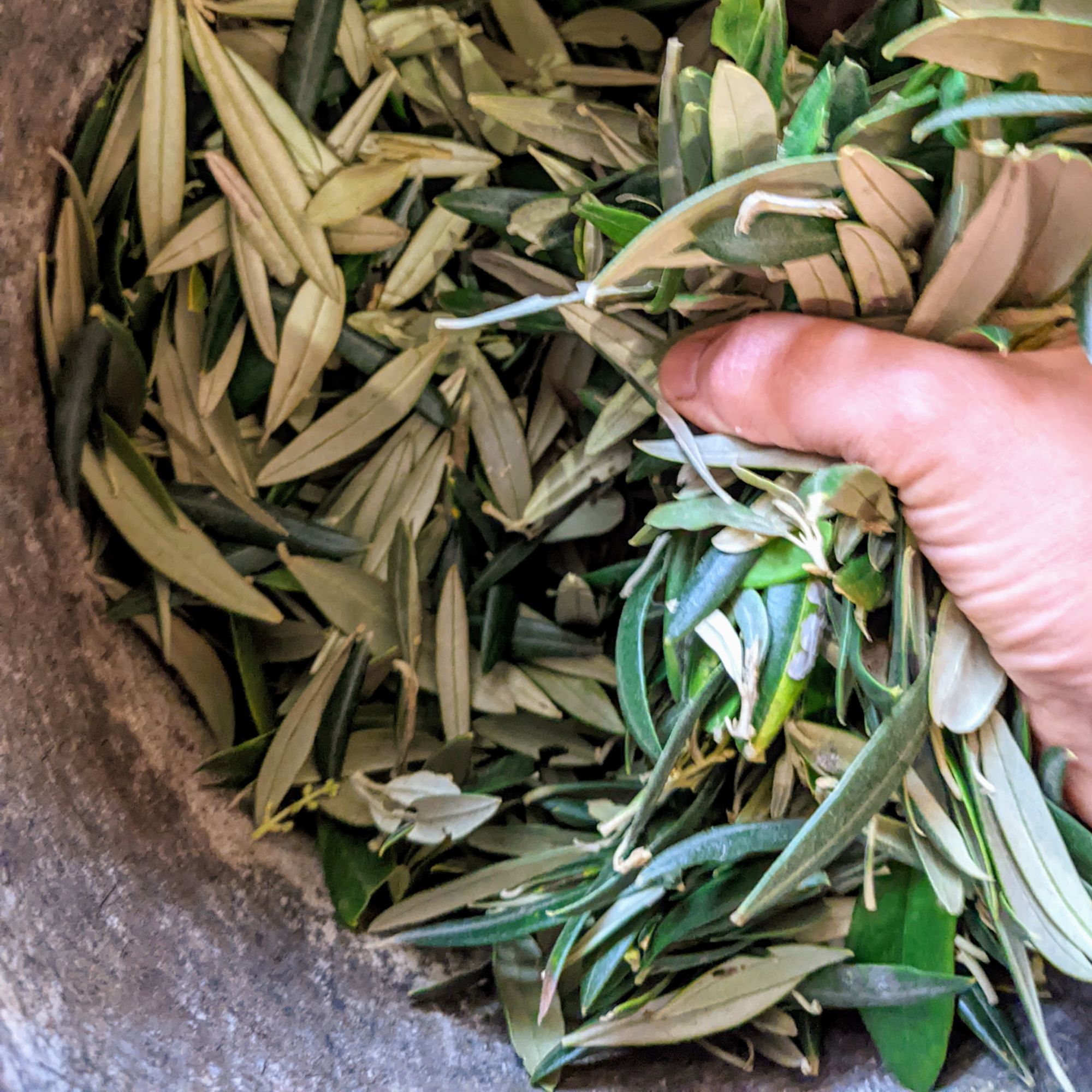
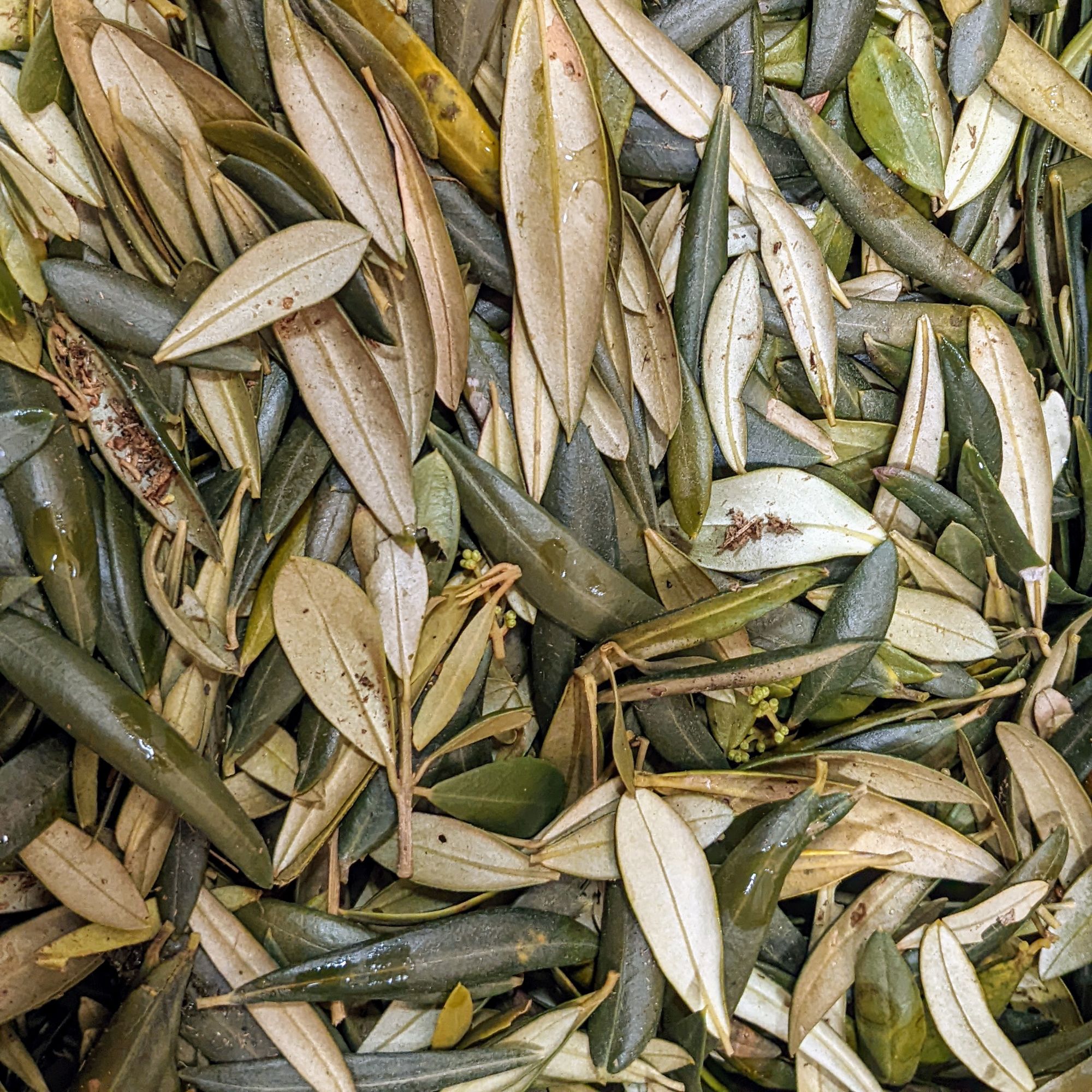
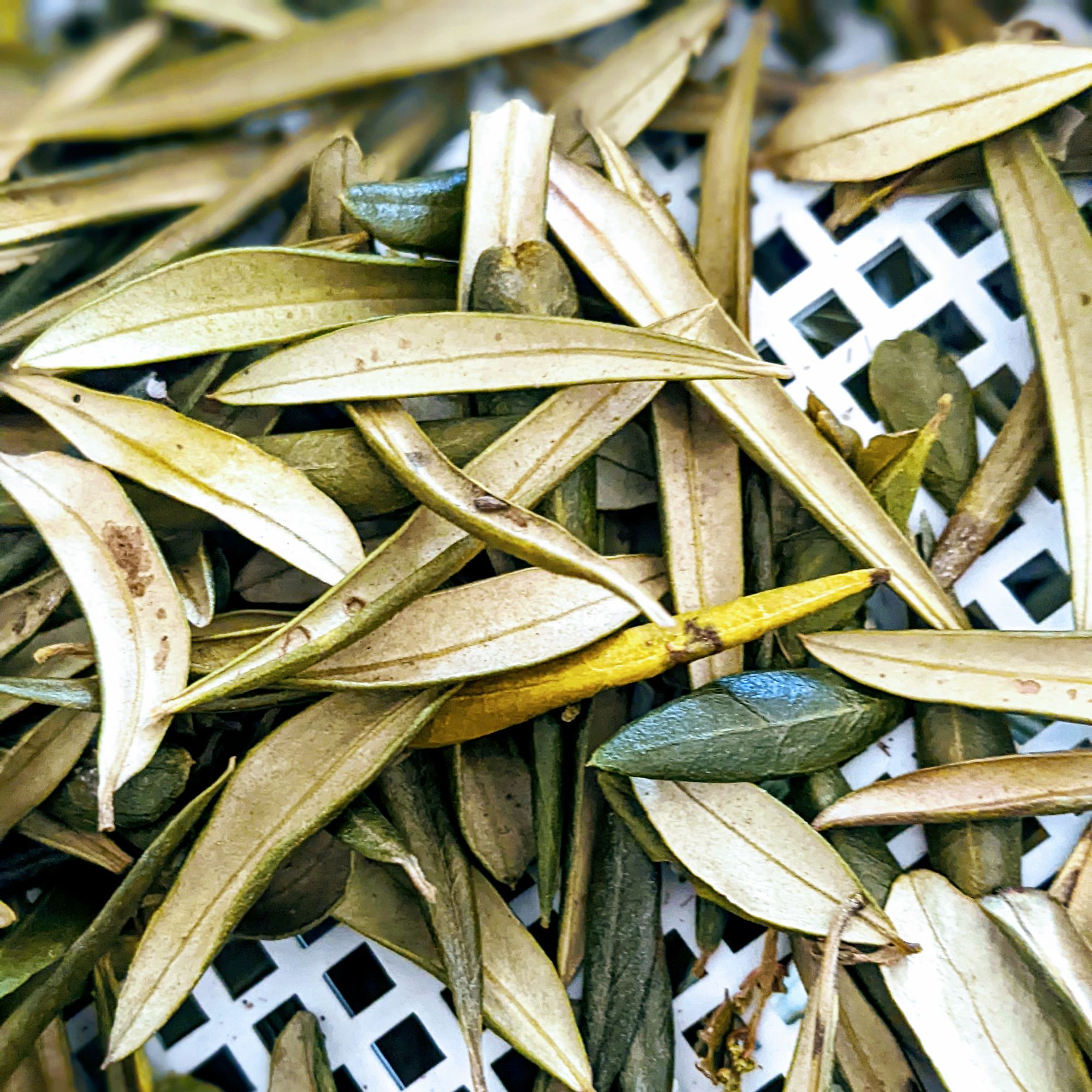

At this point, you can also make little jars and nice packets to offer as a gift to someone.
What will you make with yours?
